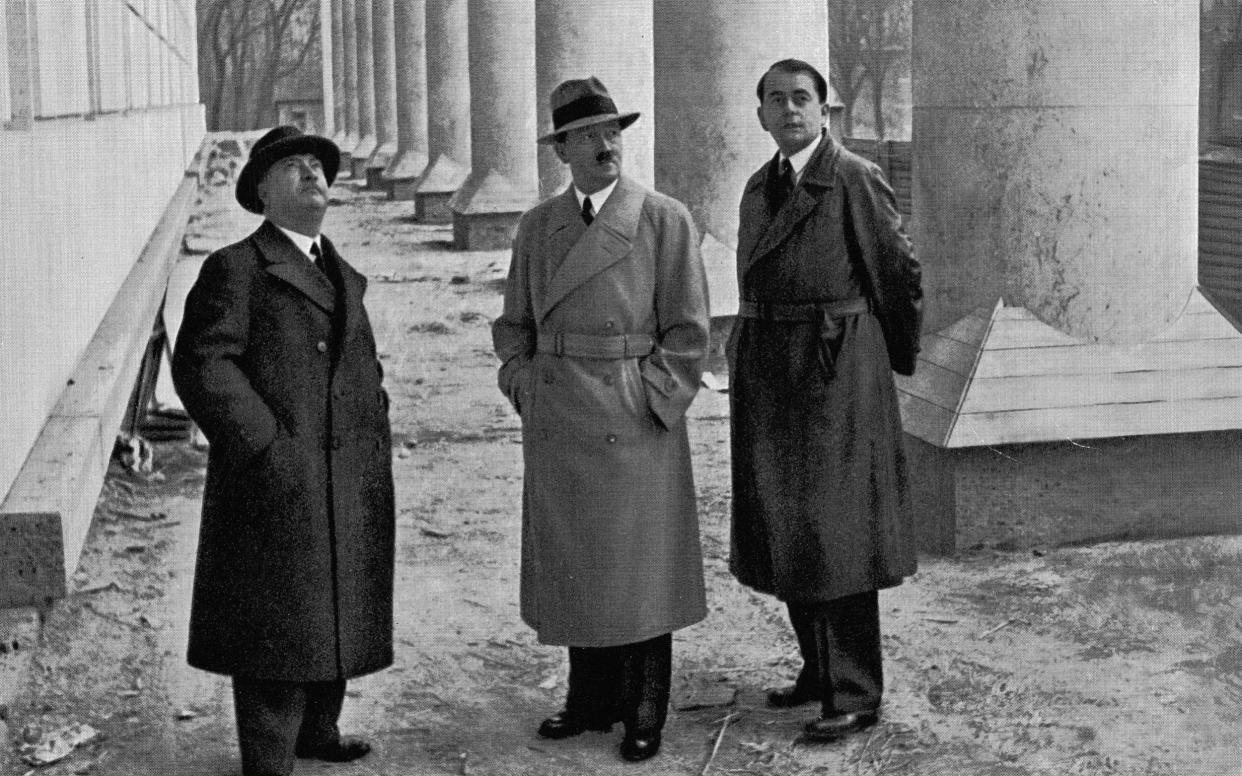Forgotten Foreign Office document casts doubt on claim architect plotted to assassinate Hitler

Renewed doubt has been cast on a claim by Adolf Hitler’s favourite architect that he once considered assassinating the Fuhrer by the discovery of a long forgotten Foreign Office document.
Albert Speer, who also served as Nazi minister for armaments and war production, claimed he turned against Hitler in the latter stages of the Second World War and planned to assassinate him by pumping poison gas into the Fuhrer Bunker in Berlin.
Historians have long doubted the claim, which helped Speer escape a death sentence in the Nuremberg trials at the end of the Second World War.
But now a German historian claims he has found new evidence it is false in a memo preserved by the Foreign Office. The memo, from an American official who interrogated Speer before the Nuremberg trials, appears to show key details of the architect’s story changed over time.
Speer was one of the most senior Nazis to stand trial after the Second World War. He claimed he didn't know about the Holocaust or other Nazi crimes and expressed remorse over his role in the regime, and was sentenced to 20 years in prison.
Prof Jürgen Brautmeier of Düsseldorf University says he found the memo in the National Archives in Kew. It appears to have been preserved by a junior Foreign Office diplomat, named only as Lawrence, who was also present at the interrogation.

In the memo, Oleg Hoeffding, the American interrogator, described Speer claiming he was inspired to assassinate Hitler by the failed 1944 plot led by Claus von Stauffenberg.
Speer claimed he came up with a plan to pump poison gas into the Fuhrer Bunker, which he had designed, while Hitler and his inner circle were gathered there, “to eliminate all those who were for a continuation of the war in one fell swoop”.
But what he told the interrogators differed in key details from the version he later told the Nuremberg tribunal.
Speer told Hoeffding and Lawrence he planned to obtain the poison gas from Karl Brandt, Hitler’s doctor. But he would later testify at Nuremberg that he planned to get it from an industrialist close to his ministry.
He also told the interrogators he changed his mind over the assassination plot after deciding that “the German people can only be cured of their delusion and the state of mind brought about by years of propaganda... by emptying the cup to the bitter end and losing all their illusions”.
But at the Nuremberg trials he testified that he changed his mind because a chimney had been added which blocked access to the ventilation inlet he planned to use.
Speer went to great lengths to rehabilitate his reputation after the Second World War, portraying himself as an architect caught up in a regime he did not understand, and insisting he knew nothing of the Holocaust.
But historians have cast doubt on many of his claims, establishing that government departments under his control built concentration camps, evicted Jews and used slave labour.

 Yahoo News
Yahoo News 
